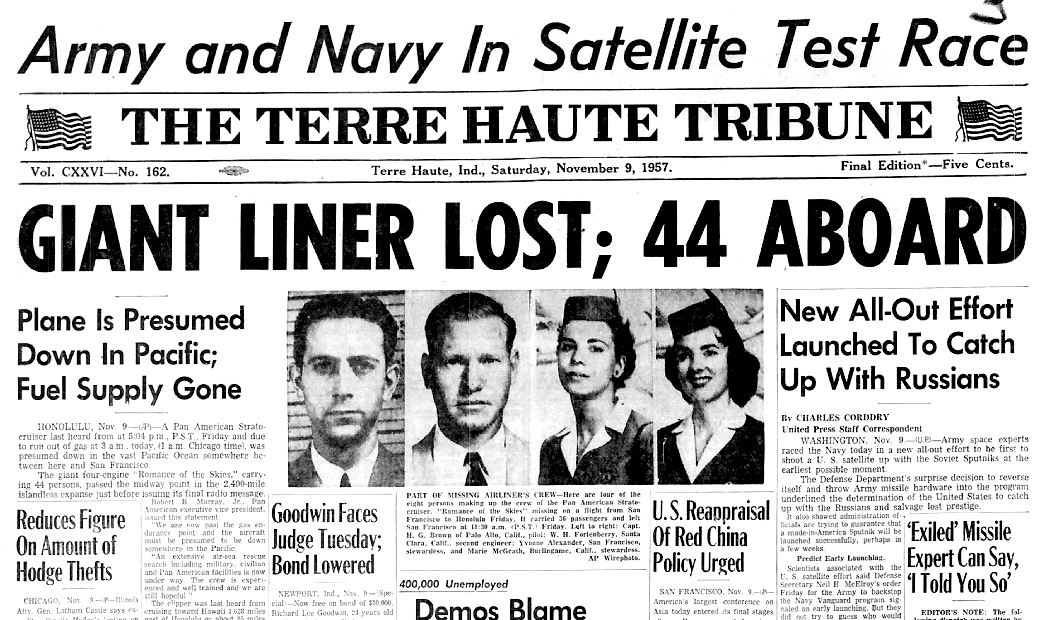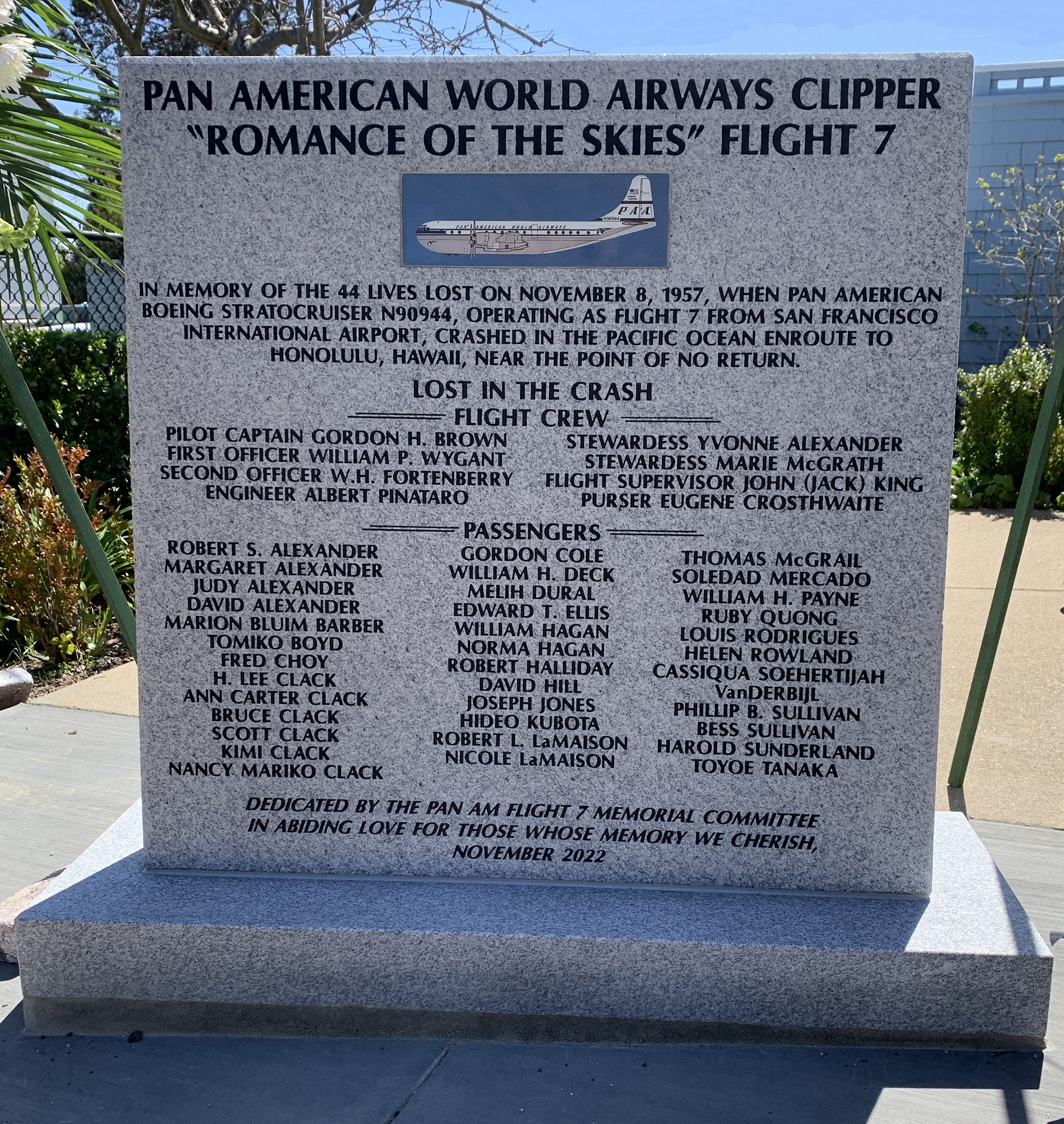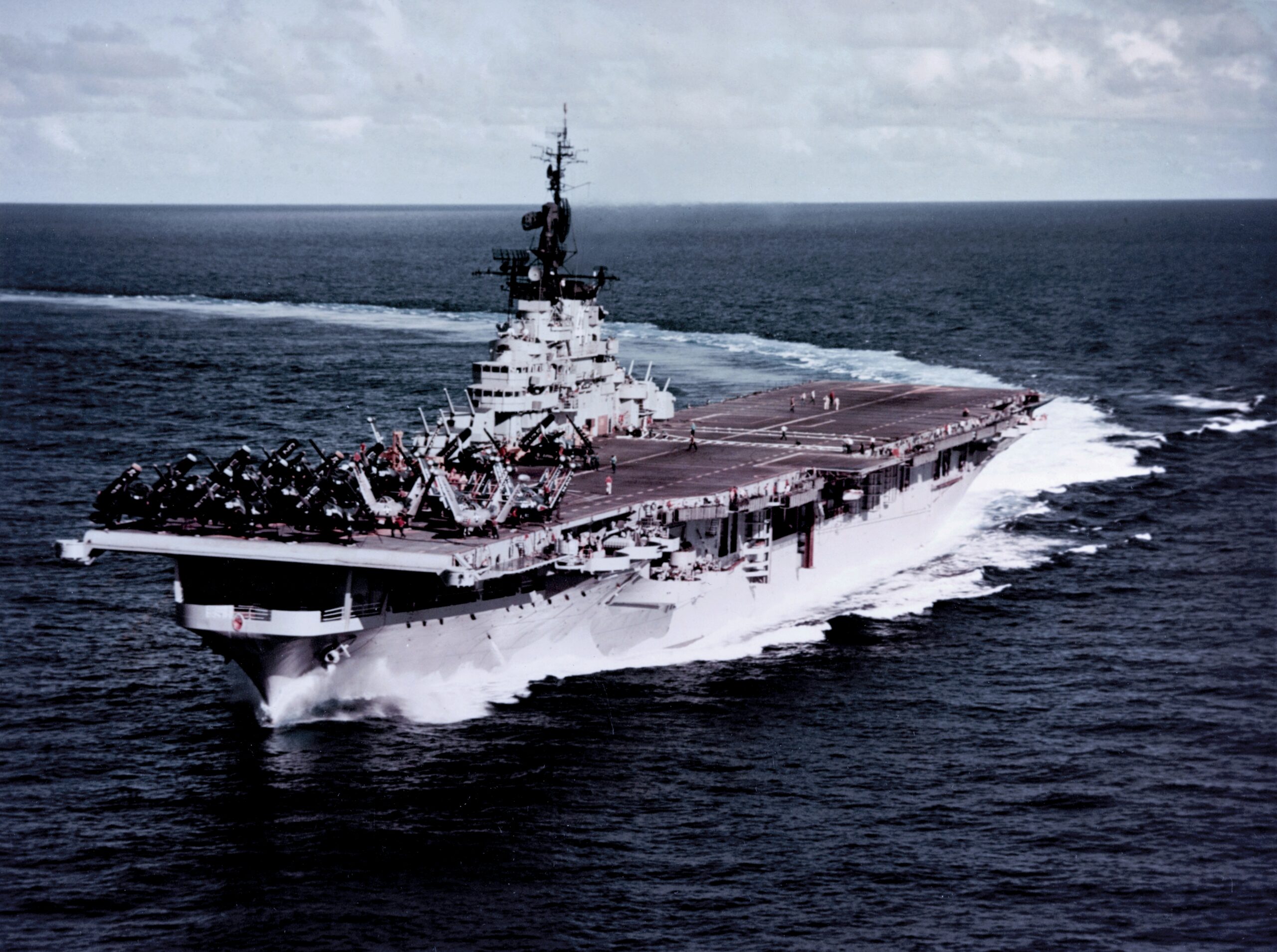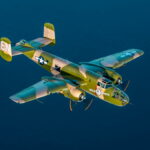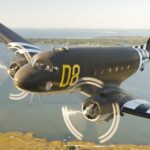by Nicholas A. Veronico
Relatives of the passengers and crew of Pan Am Flight 7 gathered at the Millbrae Historical Society, near the San Francisco International Airport, California, on April 4th, 2023, for the unveiling of a memorial. The stone tablet memorializes the names of the 44 passengers and crew lost on November 8th, 1957, when a Pan American Airways Boeing 377 Stratocruiser nicknamed Romance of the Skies crashed en route from San Francisco to Honolulu, Hawaii.
The granite marker was placed by the Pan Am Flight 7 Memorial Committee, made up of relatives of those lost in the crash. Ken Fortenberry and Gregg Herken served as co-chairs of the committee; Fortenberry’s father was copilot and navigator for the flight, and stewardess Marie McGrath was a teacher at Herken’s grammar school. Both have a very personal connection to the flight, as did many others in attendance.
The memorial can be seen on the grounds of the Millbrae History Museum, adjacent to the Millbrae Library, at 420 Poplar Ave. The museum is open Saturdays from noon to 4 p.m.
The Fatal Flight
Clipper Romance of the Skies, departed the west coast at maximum gross weight, 147,000 pounds, with enough fuel for 13 hours of flight at 11:51 a.m. PST. The flight was uneventful as the 36 passengers and eight crew members winged their way to Honolulu. Halfway through the journey, N90944 passed the Coast Guard cutter at Ocean Station “November.” At 4:30 p.m., Ocean Station November fixed the clipper’s position as 10 miles east of the ship. The plane reported-in at 5:04 p.m. Everything was normal. The plane missed its next position report one hour later, and 30 minutes after that was reported as overdue.
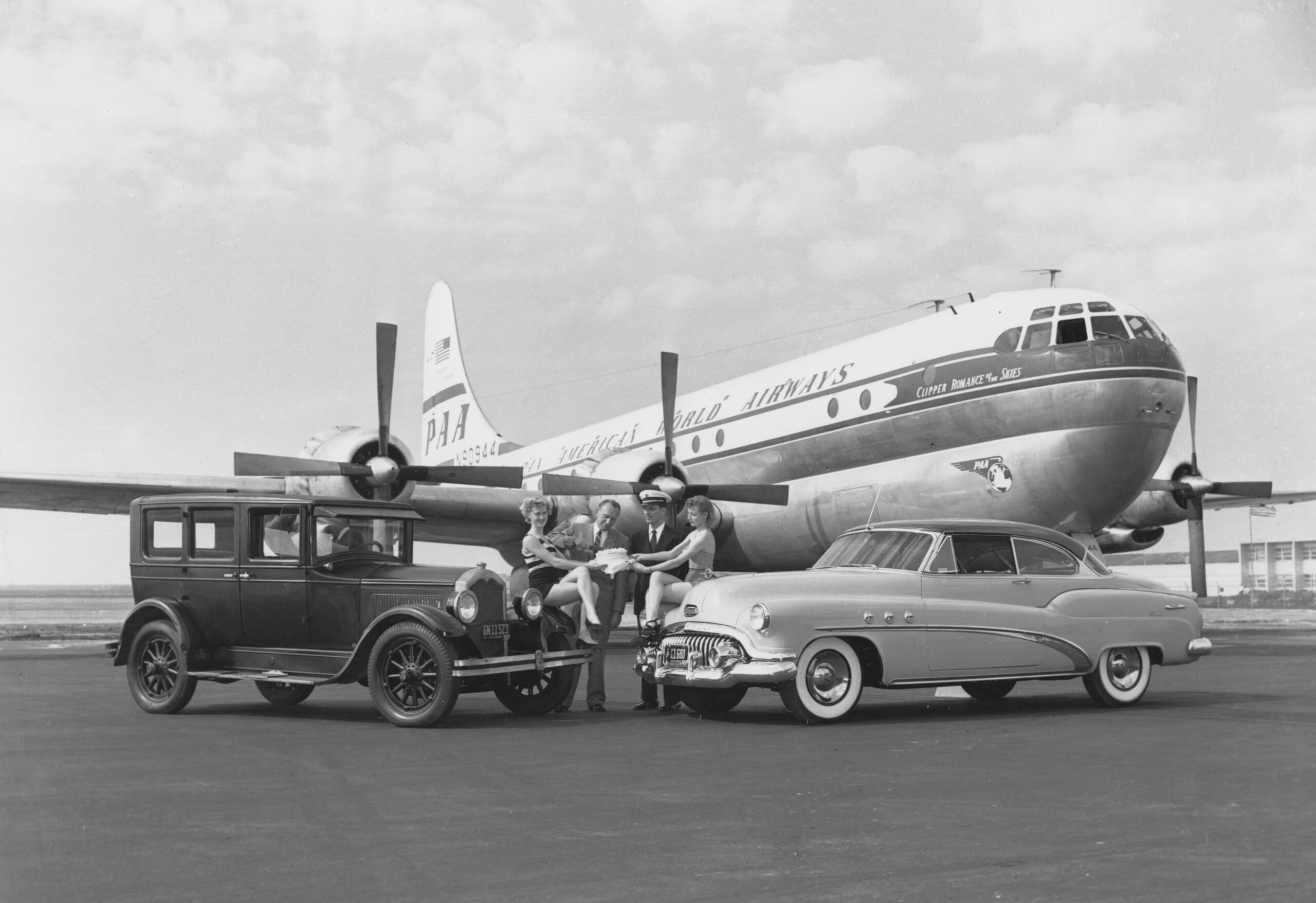
An intensive air and sea search was launched, but it was not until five days later that planes from the aircraft carrier USS Philippine Sea (CVS 47) spotted a few bodies and a small amount of wreckage floating 940 miles east of Honolulu and 90 miles north of N90944’s intended flight path. By November 15th, a total of 19 bodies had been recovered – 14 wearing life jackets. The debris showed that there had not been an in-flight fire, nor had the aircraft impacted the sea at a high rate of speed. It appeared that the passengers had been prepared for a water landing and that a successful ditching had occurred. But without a distress call, rescuers did not know where to look and were unable to do their job. The subsequent investigation showed no explosives in the cargo, and no evidence of sabotage. An examination of the bodies recovered showed that 10 of the 19 had probably drowned. The post-mortem examination showed that the bodies had high concentrations of carbon monoxide. But it could not be determined where the odorless, highly toxic gas had come from. It was determined from wrist watches on the bodies recovered that the crash happened at 5:27 p.m.
The American Civil Aeronautics Board (ACAB) was faced with answering questions such as: What caused the aircraft to ditch less then 30 minutes after reporting to Ocean Station November that all was well? Why didn’t the airliner turn back towards the ship where rescue personnel and equipment were standing by? Unable to answer these questions due to a lack of evidence, the board concluded that it had “insufficient tangible evidence…to determine the cause of the accident. Further research and investigation is in process concerning the significance of evidence of carbon monoxide in body tissue of the aircraft occupants.” More than a year later, newspaper reports showed that the ACAB had not reached a definite conclusion whether the carbon monoxide levels in the bodies could have incapacitated the crew which resulted in the crash. A cause was never determined.
Aviation Mystery Solved?
Ken Fortenberry, son of the copilot and navigator on the flight, believes there is an answer to why Clipper Romance of the Skies went down. As an adult, he became an award-winning investigative journalist and he spent 50 years determining why his father and so many others were taken from them before their time. The results of Fortenberry’s investigation were published in 2020 in his book Flight 7 Is Missing: The Search for My Father’s Killer. In the book, Fortenberry discusses numerous theories as to why the plane went down and concludes by laying out his evidence for the plane’s disappearance. The book is an excellent “who done it” aviation mystery that has needed a solution.








